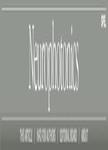版权所有:内蒙古大学图书馆 技术提供:维普资讯• 智图
内蒙古自治区呼和浩特市赛罕区大学西街235号 邮编: 010021

作者机构:Univ Kentucky Dept Biomed Engn Lexington KY 40506 USA Univ Kentucky Markey Canc Ctr Biostat & Bioinformat Shared Resource Facil Lexington KY USA Univ Kentucky Spinal Cord & Brain Injury Res Ctr Dept Physiol Lexington KY USA
出 版 物:《NEUROPHOTONICS》 (Neurophotonics)
年 卷 期:2025年第12卷第1期
页 面:015006页
核心收录:
学科分类:1002[医学-临床医学] 1001[医学-基础医学(可授医学、理学学位)] 0702[理学-物理学] 10[医学]
基 金:National Institutes of Health [R01 EB028792, R01 HD101508, R21 HD091118, R21 NS114771, R41 NS122722, R42 MH135825, R56 NS117587] National Institutes of Health (NIH) Halcomb Fellowship in Medicine and Engineering at the University of Kentucky Neuroscience Research Priority Area (NRPA) Pilot Grant from the University of Kentucky
主 题:diffuse optics speckle contrast imaging digital micromirror device line-shaped scanning cerebral blood flow
摘 要:Significance: Cerebral blood flow (CBF) imaging is crucial for diagnosing cerebrovascular diseases. However, existing large neuroimaging techniques with high cost, low sampling rate, and poor mobility make them unsuitable for continuous and longitudinal CBF monitoring at the bedside. Aim: We aimed to develop a low-cost, portable, programmable scanning diffuse speckle contrast imaging (PS-DSCI) technology for fast, high-density, and depth-sensitive imaging of CBF in rodents. Approach: The PS-DSCI employed a programmable digital micromirror device (DMD) for remote line-shaped laser (785 nm) scanning on tissue surface and synchronized a 2D camera for capturing boundary diffuse laser speckle contrasts. New algorithms were developed to address deformations of line-shaped scanning, thus minimizing CBF reconstruction artifacts. The PS-DSCI was examined in head-simulating phantoms and adult mice. Results: The PS-DSCI enables resolving intralipid particle flow contrasts at different tissue depths. In vivo experiments in adult mice demonstrated the capability of PS-DSCI to image global/regional CBF variations induced by 8% CO2 inhalation and transient carotid artery ligations. Conclusions: Compared with conventional point scanning, line scanning in PS-DSCI significantly increases spatiotemporal resolution. The high sampling rate of PS-DSCI is crucial for capturing rapid CBF changes while high spatial resolution is important for visualizing brain vasculature.